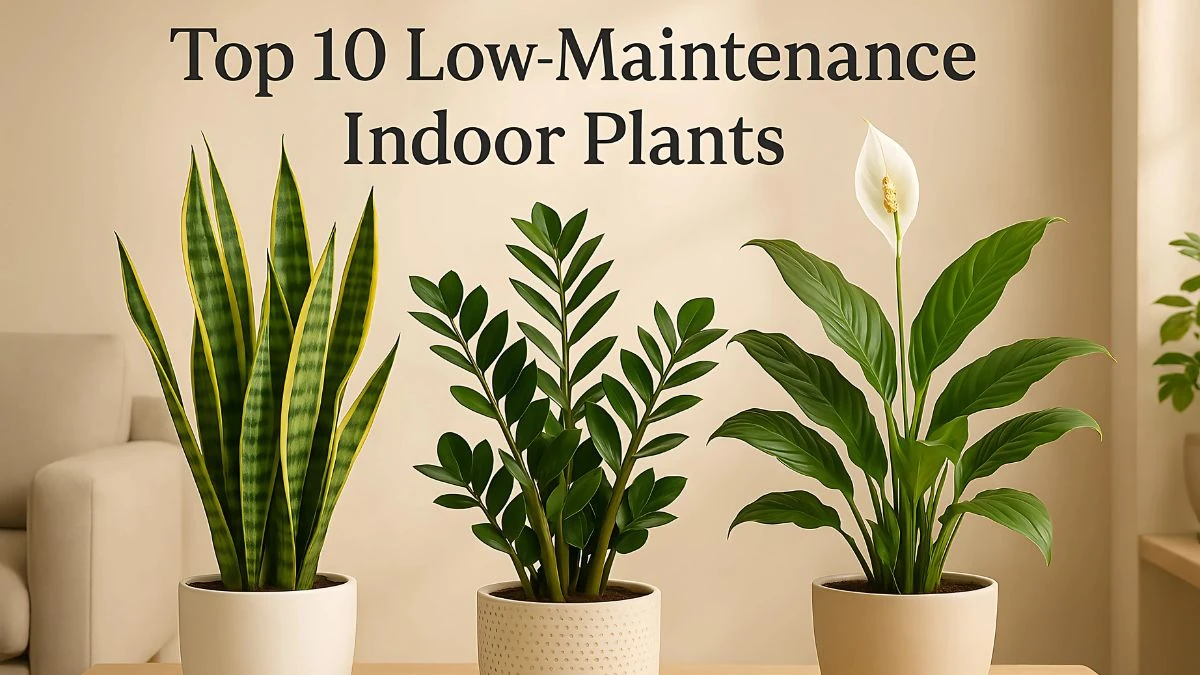Top 10 Low Maintenance Indoor Plants for Busy People
Bringing nature indoors doesn’t have to mean hours of watering, pruning, and fussing. For busy people, low maintenance indoor plants are the perfect solution—they purify the air, brighten your home, and require minimal care. Whether you’re a frequent traveler, a work-from-home professional, or simply someone who forgets to water, these resilient plants will thrive with little attention.
Here’s your expert guide to the top 10 low-maintenance indoor plants for 2025, complete with care tips, social media highlights, FAQs, and a handy comparison table.
|
Rank |
Indoor Plant |
|---|---|
|
10 |
Chinese Evergreen |
|
9 |
Philodendron |
|
8 |
Jade Plant |
|
7 |
Aloe Vera |
|
6 |
Cast Iron Plant |
|
5 |
Spider Plant |
|
4 |
Peace Lily |
|
3 |
Pothos |
|
2 |
ZZ Plant |
|
1 |
Snake Plant |
10. Chinese Evergreen
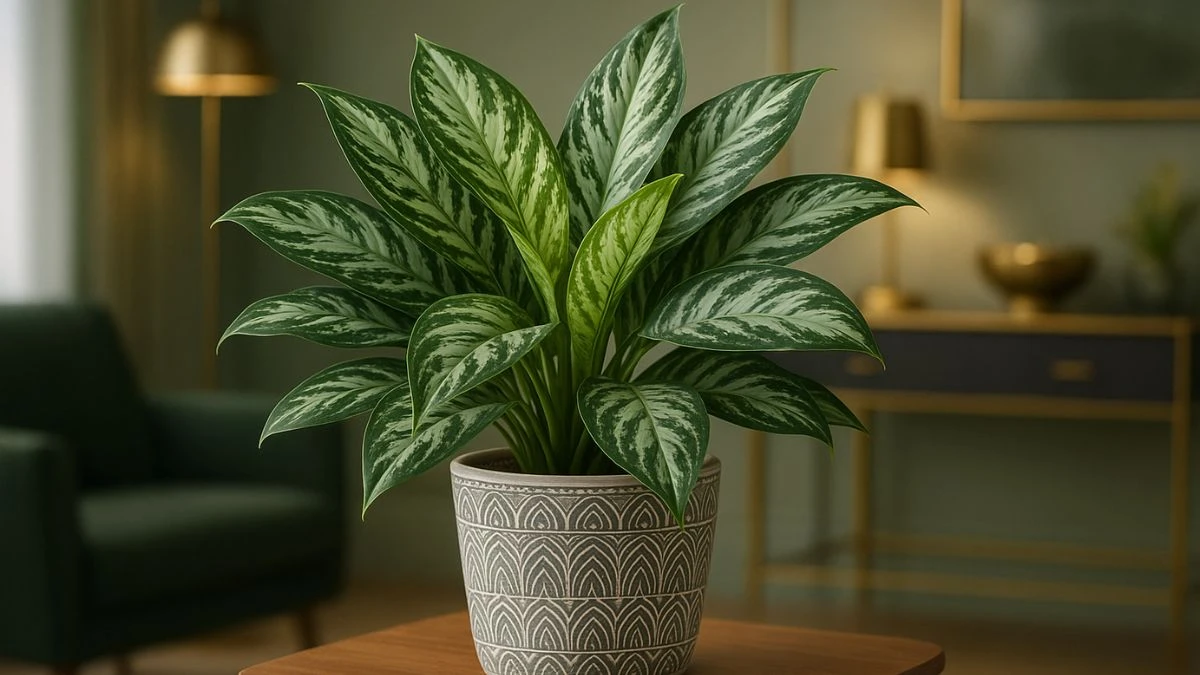
The Chinese Evergreen is celebrated for its beautiful, often variegated foliage and its ability to thrive in low light and low humidity. It’s one of the most adaptable and easy-care houseplants, making it ideal for beginners and busy people alike. Chinese Evergreens prefer to dry out between waterings and only need to be watered every 2–3 weeks. They tolerate a range of lighting conditions, from low to bright indirect light, and are known for their air-purifying qualities.
The plant is slow-growing but can live for many years with minimal care. Fertilize occasionally in spring and summer for best results. While it’s generally pest-resistant, wipe the leaves occasionally to keep them clean and shiny. Chinese Evergreen is mildly toxic if ingested, so keep it away from pets and children.
Key Points:
-
Tolerates low light and low humidity.
-
Water every 2–3 weeks; let soil dry out between waterings.
-
Attractive, variegated foliage.
-
Excellent air purifier.
-
Mildly toxic if ingested.
9. Philodendron
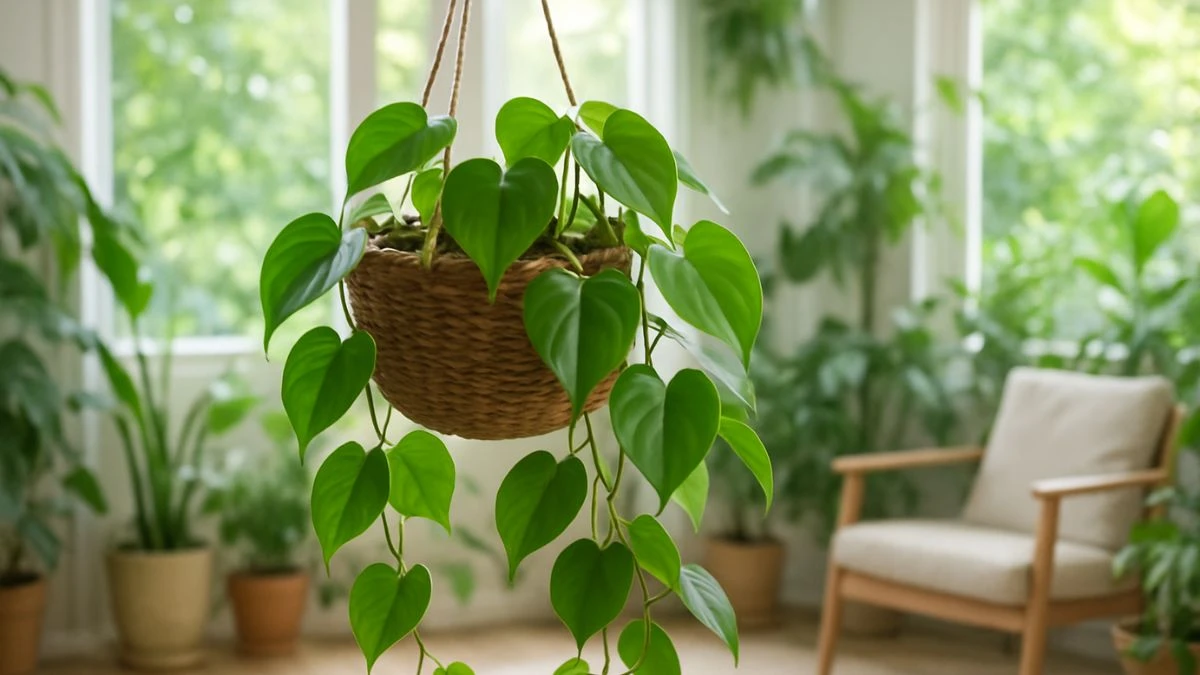
Philodendrons are a diverse group of tropical plants known for their heart-shaped leaves and ability to thrive in a variety of indoor conditions. They do well in low to medium indirect light and only need watering when the top inch of soil feels dry. Philodendrons are forgiving of occasional neglect and can handle missed waterings.
They are also efficient air purifiers, helping to remove toxins from indoor air. These plants are easy to propagate by stem cuttings, making them a favorite among plant enthusiasts. Philodendrons prefer well-draining soil and benefit from a balanced fertilizer during the growing season. While generally low maintenance, they are toxic if ingested, so keep them out of reach of pets and children.
Key Points:
-
Thrives in low to medium indirect light.
-
Water when the top inch of soil is dry.
-
Excellent air purifier and easy to propagate.
-
Tolerates occasional neglect.
-
Toxic if ingested.
8. Jade Plant
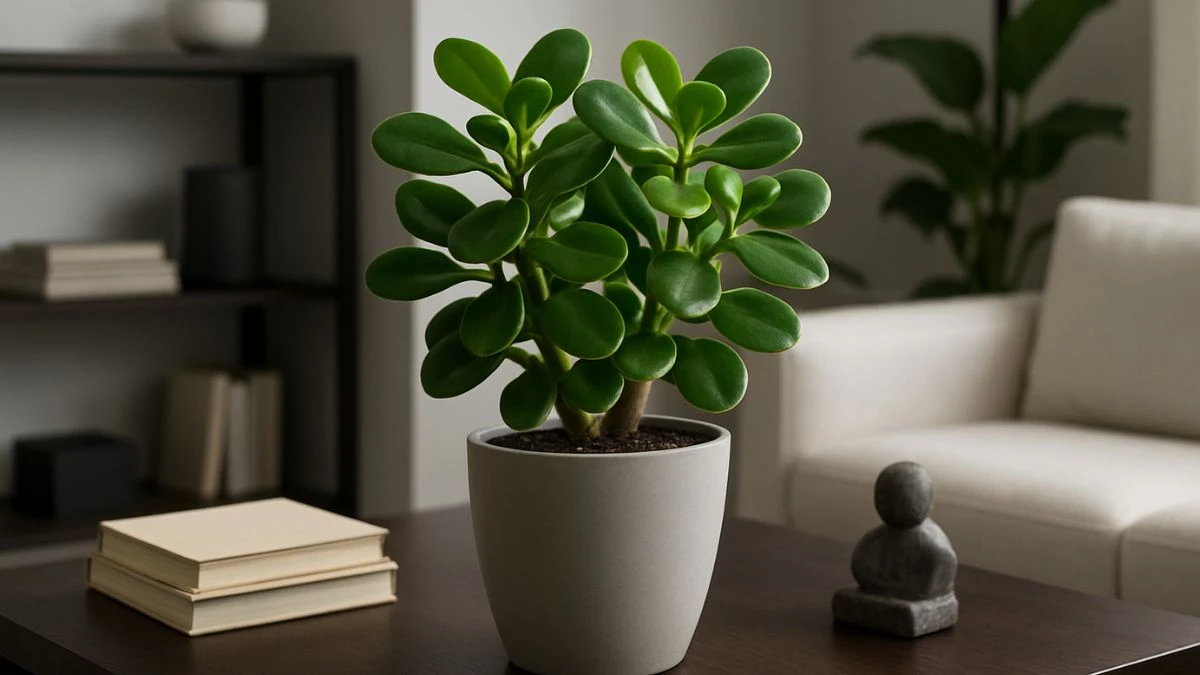
The Jade Plant is a classic succulent with thick, glossy, oval-shaped leaves and a reputation for being a symbol of good luck and prosperity. It thrives in bright, indirect light but can also tolerate some direct sunlight. Jade Plants require minimal watering—once every 2–3 weeks is usually sufficient, and the soil should be allowed to dry out between waterings. Overwatering can lead to root rot, so drainage is essential. Jade Plants are slow growers but can live for decades with proper care.
They are easy to propagate from stem or leaf cuttings, making them a great plant to share. Occasionally wipe the leaves to keep them dust-free and feed with a diluted fertilizer during the growing season. Jade Plants are mildly toxic if ingested, so keep them away from pets and children.
Key Points:
-
Prefers bright, indirect light; tolerates some direct sun.
-
Water every 2–3 weeks; allow soil to dry between waterings.
-
Symbolizes good luck and prosperity.
-
Easy to propagate from cuttings.
-
Mildly toxic if ingested.
7. Aloe Vera
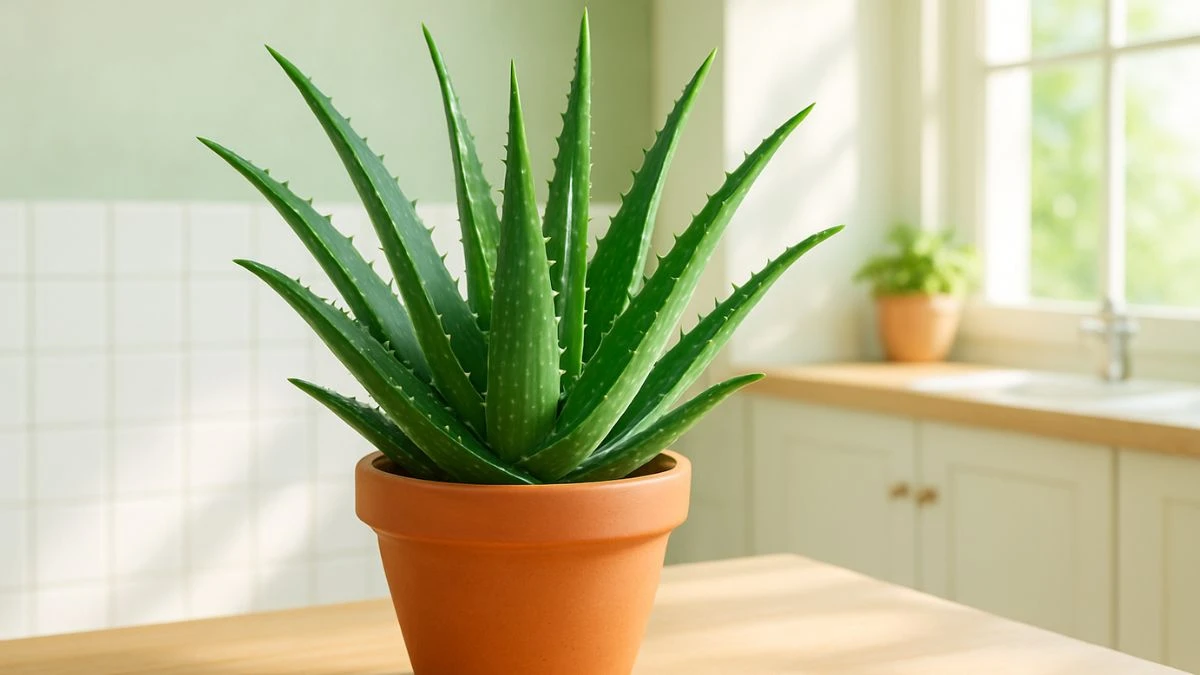
Aloe Vera is a popular succulent known for both its attractive, fleshy leaves and its medicinal properties. It thrives in bright, indirect sunlight but can tolerate some direct sun as well. Aloe Vera stores water in its leaves, so it requires infrequent watering—about every 2–3 weeks, allowing the soil to dry out completely between waterings.
Overwatering is the main threat to this plant, so err on the side of underwatering. In addition to being easy to care for, Aloe Vera gel can be used to soothe minor burns and skin irritations, making it a practical plant to keep around the house. It prefers well-draining cactus or succulent soil and benefits from occasional feeding in the spring and summer. Aloe Vera is mildly toxic if ingested by pets or children, so keep it out of their reach.
Key Points:
-
Needs bright, indirect light; tolerates some direct sun.
-
Water every 2–3 weeks; let soil dry out completely.
-
Medicinal uses for burns and skin care.
-
Prefers well-draining soil.
-
Mildly toxic if ingested.
6. Cast Iron Plant
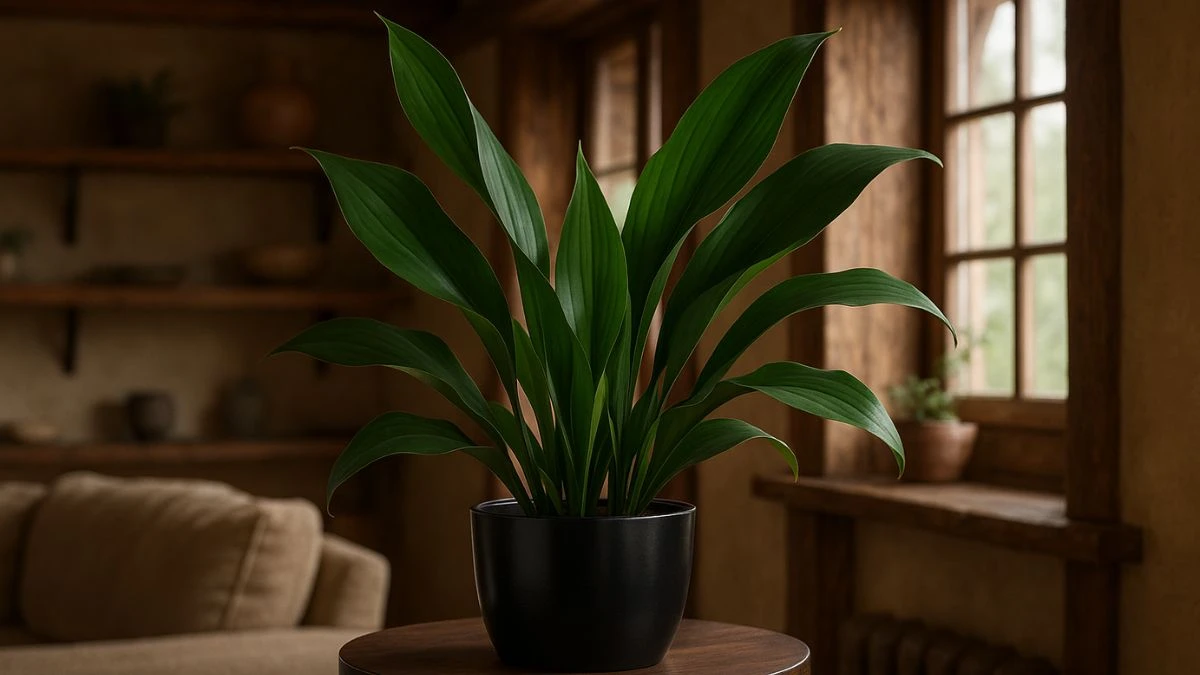
The Cast Iron Plant is named for its incredible toughness and ability to thrive on neglect, making it a favorite for those with busy schedules or less-than-ideal indoor conditions. Native to East Asia, this plant features broad, deep green leaves that can tolerate low light, temperature fluctuations, and infrequent watering.
It’s highly resistant to pests and diseases, and it doesn’t mind if you forget to water it for weeks at a time. Cast Iron Plants prefer well-draining soil and should be watered only when the soil is dry to the touch. They also handle dry indoor air well, so there’s no need for misting. While the plant rarely flowers indoors, its lush foliage adds a touch of elegance and calm to any space. It’s non-toxic to pets and children, making it a safe addition to homes and offices.
Key Points:
-
Thrives in low light and tolerates neglect.
-
Water only when soil is dry; drought-tolerant.
-
Handles temperature changes and dry air.
-
Non-toxic to pets and children.
-
Very resistant to pests and diseases.
5. Spider Plant
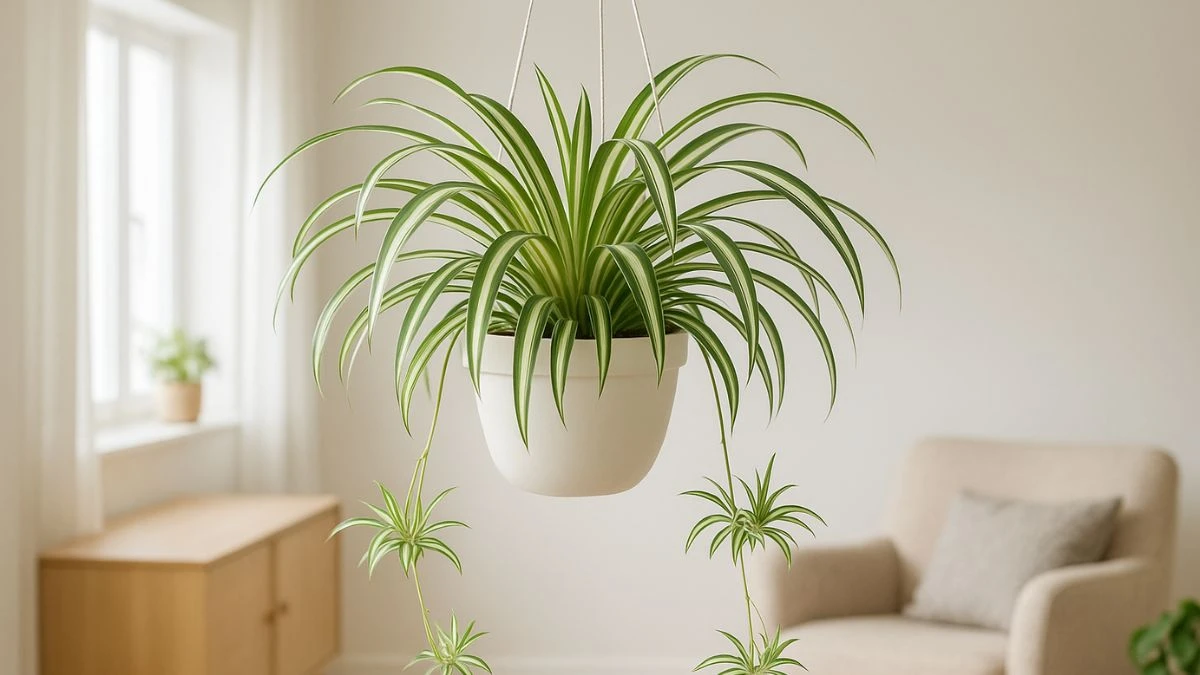
Spider Plants are beloved for their arching green-and-white striped leaves and their ability to produce “spiderettes” or baby plants, which can be easily propagated. They thrive in bright, indirect light but are tolerant of lower light levels.
Water moderately, allowing the soil to dry out between waterings; they are forgiving if you forget to water occasionally. Spider Plants are renowned for their air-purifying abilities, removing toxins like formaldehyde and carbon monoxide, and they release oxygen, making them excellent for bedrooms and offices.
They are non-toxic to pets and children, making them a safe choice for families. Occasional misting helps prevent brown leaf tips, especially in dry indoor environments. Repot every 1–2 years or when root-bound. Their resilience, ease of care, and attractive appearance make them a top choice for busy people.
Key Points:
-
Thrives in bright, indirect light but tolerates low light.
-
Water when soil is dry; drought-tolerant and forgiving.
-
Excellent air purifier; non-toxic to pets and children.
-
Produces baby plants for easy propagation.
-
Minimal feeding and maintenance required.
4. Peace Lily
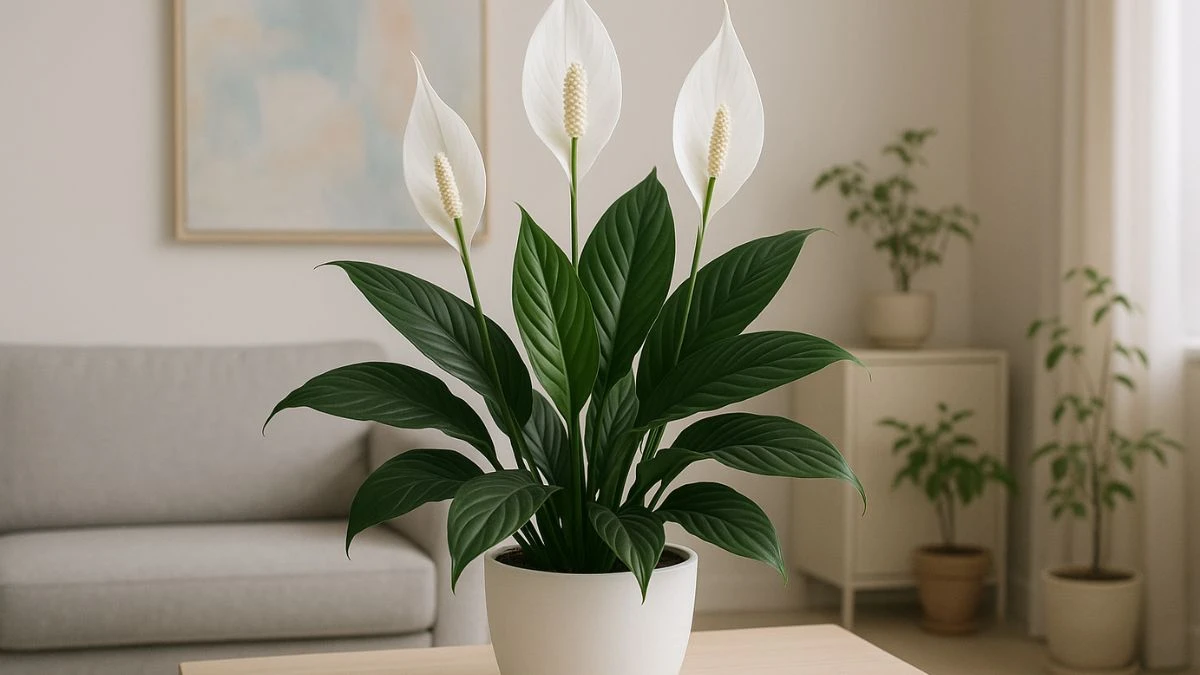
The Peace Lily is prized for its elegant white blooms and lush green foliage. It’s a forgiving plant that thrives in low to medium indirect light, making it suitable for almost any indoor space. Peace Lilies prefer their soil to be kept evenly moist but not soggy—water when the top inch is dry.
They are known for their ability to remove toxins like formaldehyde and ammonia from the air, contributing to a healthier home environment. Peace Lilies also release moisture, increasing humidity and helping to alleviate dry indoor air.
They’re low-maintenance: wipe leaves occasionally, repot in spring, and fertilize a couple of times in spring and summer. While generally safe, they are mildly toxic if ingested. Their combination of beauty, air purification, and easy care makes them a favorite for busy individuals and beginners alike.
Key Points:
-
Tolerates low to medium light; prefers indirect sunlight.
-
Water when the top inch of soil is dry; avoid letting it sit in water.
-
Excellent air purifier and natural humidifier.
-
Blooms indoors and adds elegance to any space.
-
Mildly toxic if ingested—keep away from pets and children.
3. Pothos
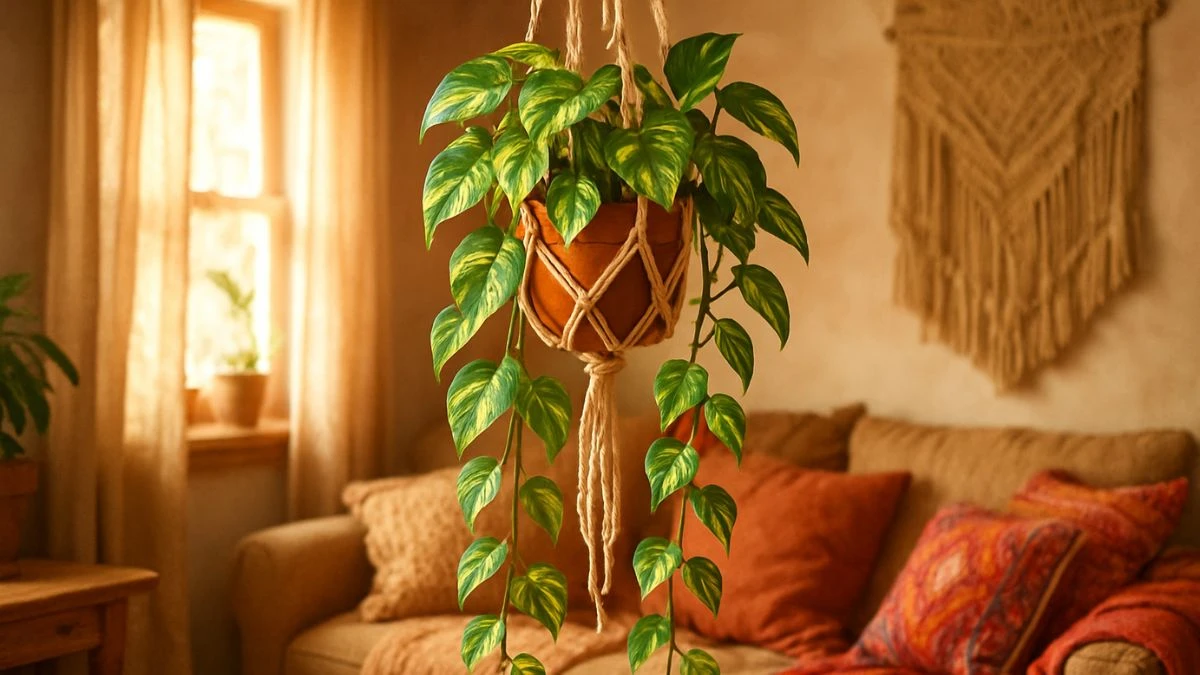
Pothos, also known as Devil’s Ivy, is a fast-growing, trailing vine that’s perfect for shelves, hanging baskets, or climbing up supports. Its heart-shaped, glossy leaves are often variegated with white, yellow, or pale green, adding a vibrant touch to any room.
Pothos is extremely adaptable, thriving in low to bright indirect light, and even tolerating fluorescent lighting. Water only when the top 2 inches of soil are dry—overwatering can cause root rot. It’s forgiving if you forget to water occasionally.
Pothos is a NASA-recommended air purifier, effective at removing indoor toxins. It’s easy to propagate via stem cuttings, making it a great plant to share. However, it is toxic to pets and humans if ingested. Fertilize monthly during spring and summer for best growth. Its resilience, beauty, and minimal care requirements make pothos a staple for busy plant lovers.
Key Points:
-
Thrives in low to bright indirect light; tolerates fluorescent light.
-
Water when top 2 inches of soil are dry.
-
Fast-growing, easy to propagate, and air-purifying.
-
Toxic if ingested—keep away from pets and children.
-
Minimal feeding and maintenance.
2. ZZ Plant
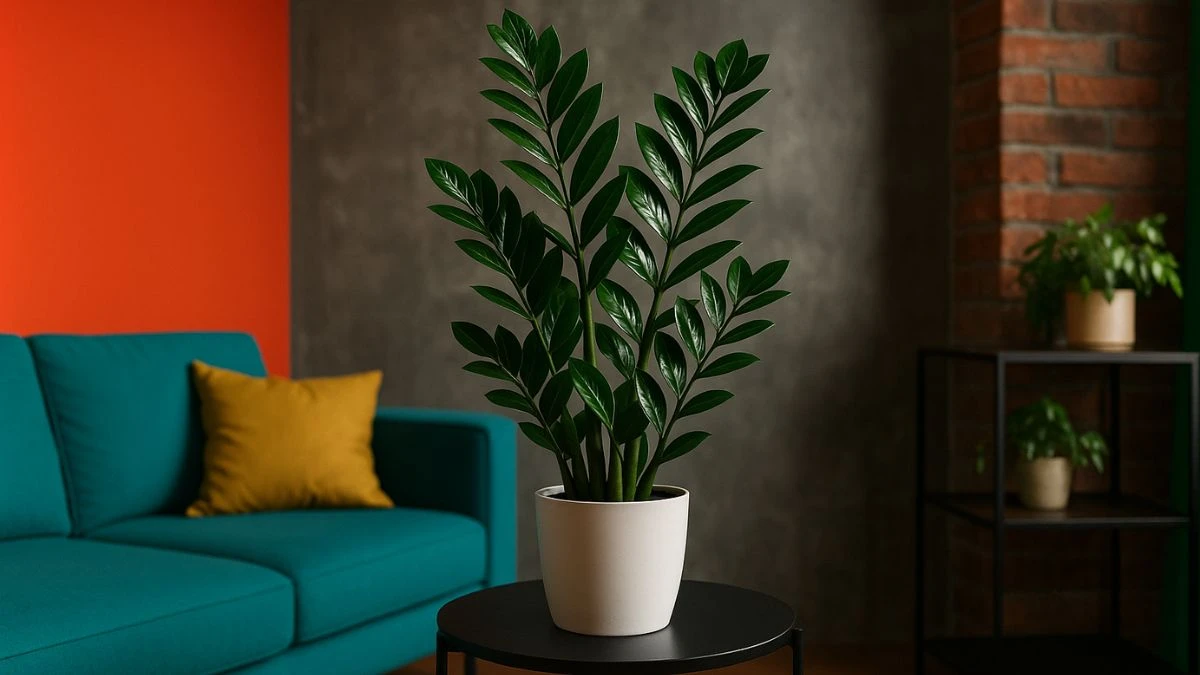
The ZZ Plant is celebrated for its glossy, dark green leaves and exceptional tolerance to neglect. It’s a dream for those who travel often or forget to water, as its thick rhizomes store water, allowing it to go weeks without attention. ZZ Plants do best in low to moderate indirect light but can adapt to fluorescent lighting, making them perfect for offices and dim rooms. Water only when the soil is dry 2–3 inches down; overwatering is the most common way to harm this plant.
ZZ Plants are also known for their air-purifying qualities, removing toxins like xylene and toluene. They’re non-toxic and allergy-friendly, making them safe for homes with pets and children. Fertilize sparingly, once in spring and summer. Wipe leaves occasionally to keep them shiny and dust-free. Their resilience and low maintenance needs make them a favorite for beginners and busy lifestyles.
Key Points:
-
Tolerates low light and infrequent watering.
-
Water every 2–4 weeks; let soil dry out between waterings.
-
Excellent air purifier; safe for pets and allergy sufferers.
-
Thrives on neglect and is drought-tolerant.
-
Minimal feeding and maintenance required.
1. Snake Plant

The Snake Plant, also known as Sansevieria or Mother-in-Law’s Tongue, is a top pick for busy people and new plant parents due to its nearly indestructible nature. Native to West Africa, it features upright, sword-shaped leaves with striking variegation, making it a stylish addition to any home or office. Snake plants thrive in a wide range of lighting conditions, from low to bright indirect light, and only require watering every 2–3 weeks—less in winter.
They are drought-tolerant, so it’s better to underwater than overwater. Snake plants are renowned for their air-purifying abilities, efficiently removing toxins like formaldehyde and benzene from indoor air, which can improve respiratory health and sleep quality. They also release oxygen at night, making them ideal for bedrooms. Maintenance is minimal: wipe leaves occasionally, repot every couple of years, and feed with liquid fertilizer in spring and summer. However, the plant is mildly toxic if ingested, so keep it away from pets and children.
Key Points:
-
Thrives in nearly any light; prefers indirect sunlight.
-
Water every 2–3 weeks; allow soil to dry out between waterings.
-
Excellent air purifier and oxygen producer at night.
-
Minimal pruning and feeding required.
-
Mildly toxic if ingested—keep out of reach of pets and kids.
Why Choose Low-Maintenance Indoor Plants?
-
Minimal Care: These plants survive with infrequent watering and low light.
-
Air Purification: Many help remove toxins and improve air quality.
-
Stress Relief: Studies show indoor greenery boosts mood and productivity.
-
Perfect for Beginners: No green thumb required!
Tips for Busy Plant Owners
-
Use self-watering pots for even less maintenance.
-
Group plants with similar care needs together.
-
Place plants in spots with indirect sunlight for best results.
-
Dust leaves occasionally to keep them healthy.
Frequently Asked Questions (FAQ)
Which indoor plant is the easiest to care for?
The Snake Plant and ZZ Plant are widely considered the most resilient and low maintenance.
Are these plants safe for pets?
Some, like the Spider Plant and Cast Iron Plant, are pet-friendly. Always check before bringing a new plant home.
How often should I water my indoor plants?
Most low maintenance plants thrive with watering every 1-3 weeks, depending on the species and environment.

